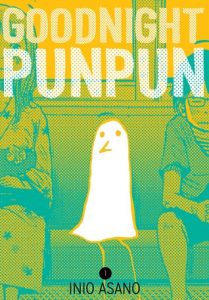 I picked Goodnight Punpun up at the library because it looked intriguing. It was only once I got home I realised that it was actually manga. I’ve been meaning to read more manga, so this didn’t faze me much, but now I’ve read it I’m not so sure. It was… weird.
I picked Goodnight Punpun up at the library because it looked intriguing. It was only once I got home I realised that it was actually manga. I’ve been meaning to read more manga, so this didn’t faze me much, but now I’ve read it I’m not so sure. It was… weird.
Pupun is a young boy, and according to the back of the book (which is the front, if you read from left to right) «is an average kid in an average town. He wants to win a Nobel Prize and save the world. He wants the girl he has a crush on to like him back. He wants to find some porn.» All well and good.
However, as I said, it was weird.
One thing is that that’s Punpun on the cover. His family looks like this:
While everyone else looks normal:
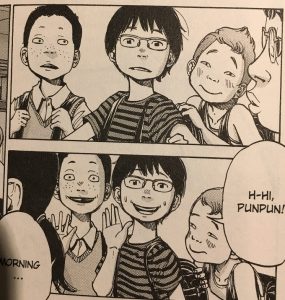 Which I failed to see the significance of, to be honest. It’s probably me being dim, though.
Which I failed to see the significance of, to be honest. It’s probably me being dim, though.
Well, I say normal… Fairly normal, most of the time. However your teacher may look like this if he thinks you haven’t done your homework:
And you principal and head teacher may look like this while planning a game of hide and seek (a storyline I also completely failed to see the point of, by the way, but that’s by the by):
(Yes, I am aware that exaggeration of physical expression of feelings is usual in Japanese graphic art. Still.)
Also, if you chant:
God appears. Like this:
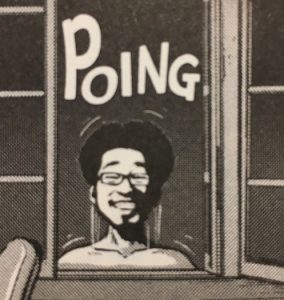 He will talk to you, and answer (some) questions, but his advice isn’t particularly helpful. So, one thing that’s fairly realistic in the story, then.
He will talk to you, and answer (some) questions, but his advice isn’t particularly helpful. So, one thing that’s fairly realistic in the story, then.
As for the rest, it basically mostly baffles me. There doesn’t seem to be a plot, as such. There’s a story running through most of the volume about domestic violence and divorce as a result, but it’s… weird. And then there’s the guy who has recorded over a porn video in order to confess to murder, and the following hunt for bounty. Which is also mostly weird. And Punpun himself is… weird. Not just weird-looking, but expressionless and full of feeling at the same time (which is a hard act to pull off, I suppose, which might be why it doesn’t really work).
I’m sure it’s supposed to make sense. No, strike that, I’m pretty sure it’s supposed to be weird, or at least sort of quirky in a dark way. But I am sure I’m supposed to get something, a significance, an epiphany, an insight or at least some platitudes about growing up or something, out of it. And… I don’t.
So.
I’m still going to read more manga, but perhaps I’ll try something a bit less edgy and art-like next. Perhaps Dragonball. Or Sailor Moon.
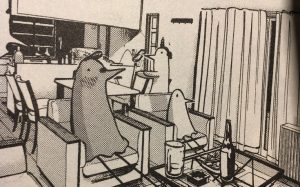
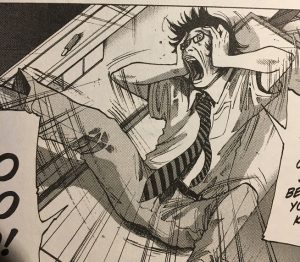
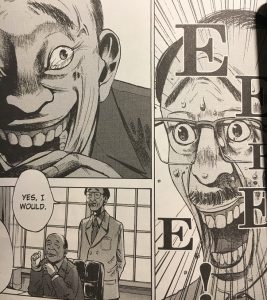
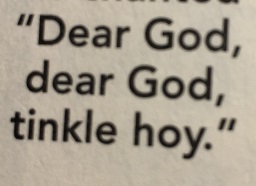
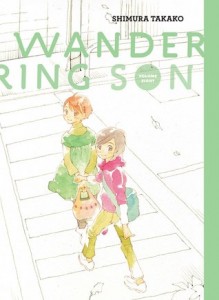 I picked up Vol 1 of Wandering Son by
I picked up Vol 1 of Wandering Son by 